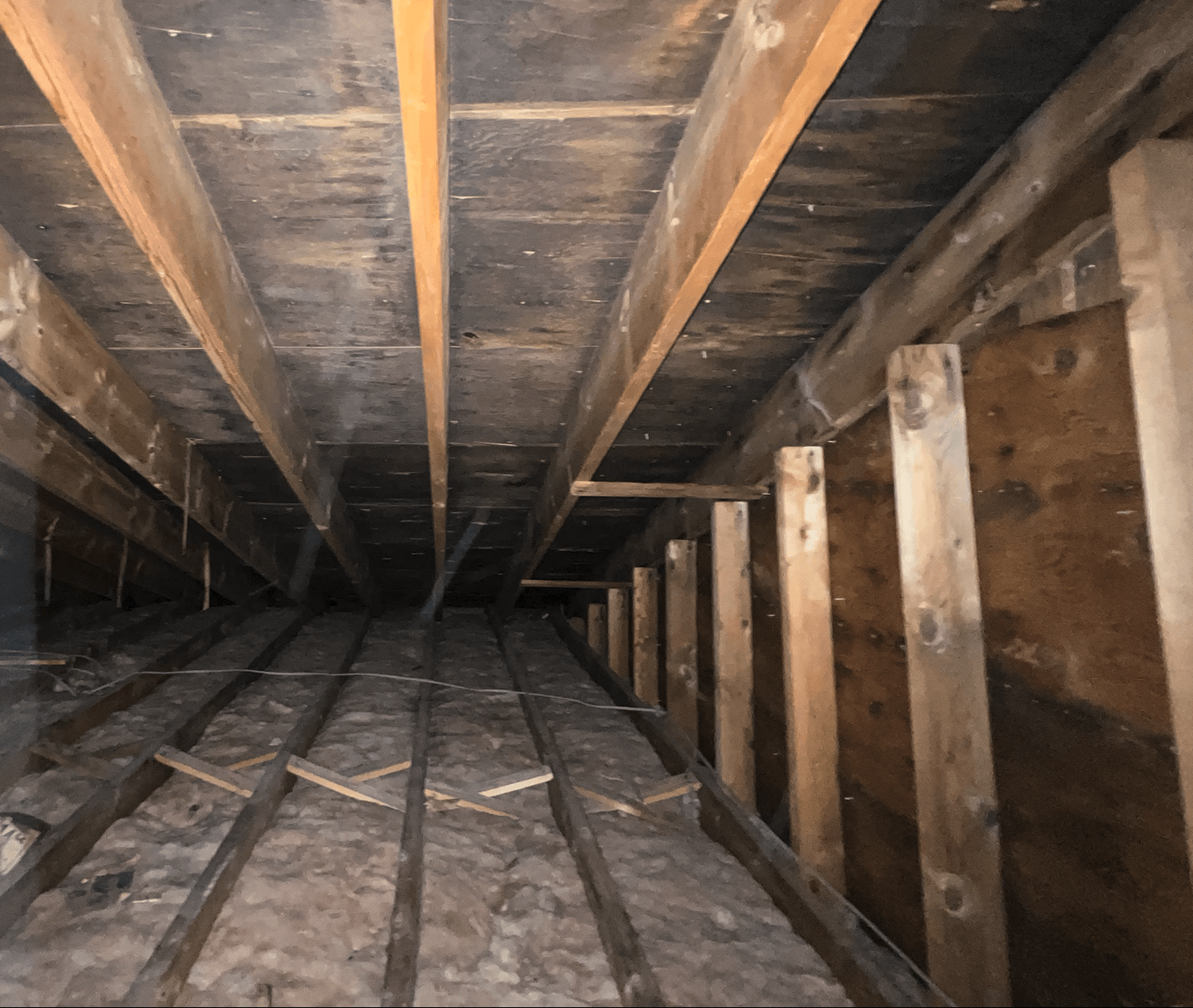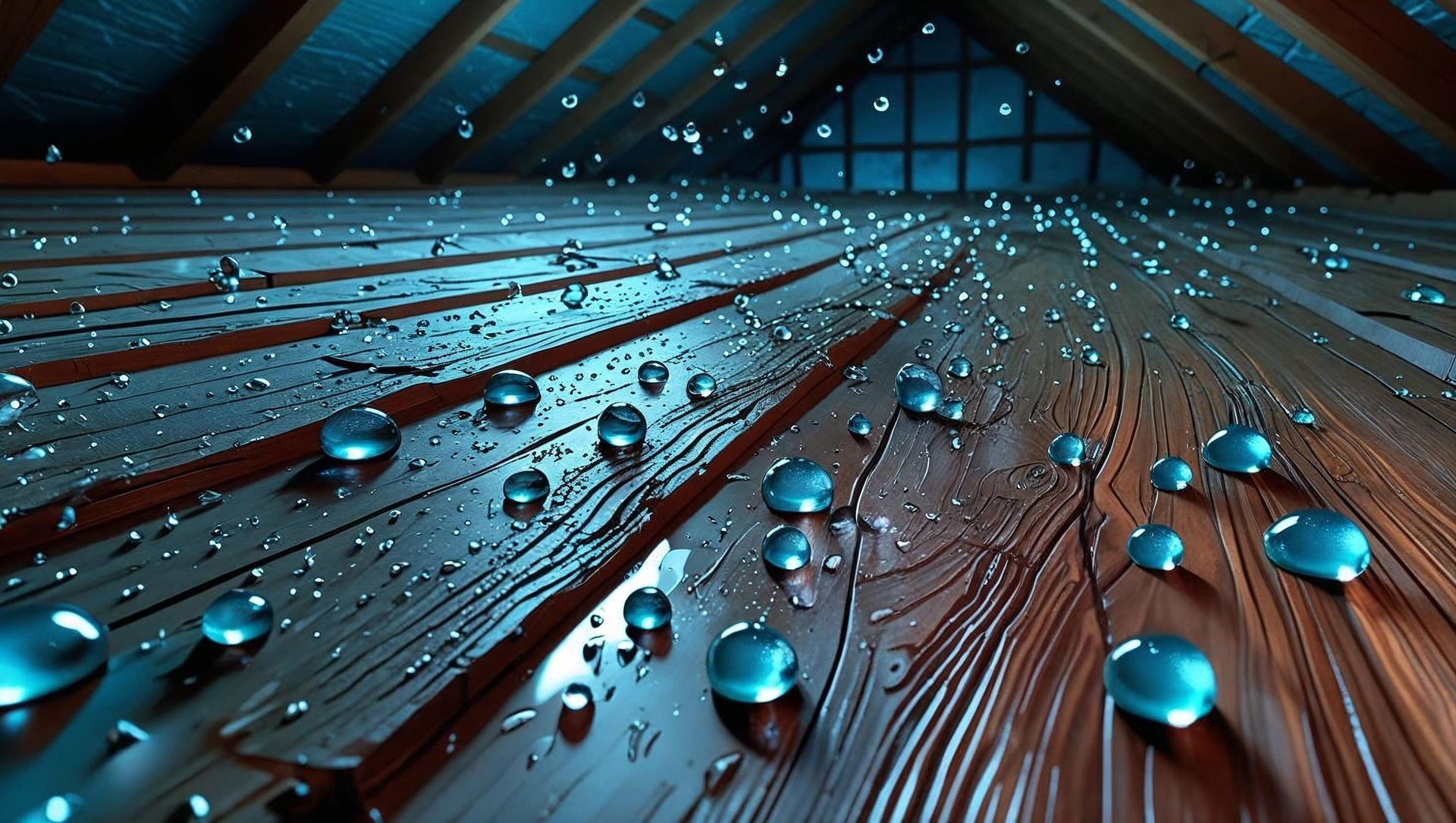Mold in attics is a much greater/common problem than people think. This winter you should inspect for moisture.
Matthew Fournier 12/15/22
Condensation in attics can be a serious problem, especially when poor insulation and ventilation exist. This type of moisture buildup can lead to the growth of mold and mildew, which can cause a variety of health problems and damage to the structure of your home. In order to understand why condensation occurs in attics when poor insulation and ventilation exist, it's important to understand how moisture behaves in these conditions.
When warm, moist air comes into contact with a cool surface, such as the roof or walls of an attic, it will begin to condense. This is because the warm air loses its ability to hold onto moisture when it comes into contact with the cooler surface. As a result, the moisture in the air will begin to collect on the surface, forming droplets of water.
Poor insulation in the attic can exacerbate this problem by allowing the warm, moist air to easily come into contact with the cooler surfaces of the roof and walls. When the attic is not properly insulated, warm air from inside the home can easily rise up into the attic, where it will come into contact with the cooler surfaces and condense.
Similarly, poor ventilation in the attic can also contribute to the problem of condensation. When the attic is not properly ventilated, the warm, moist air from inside the home has nowhere to go, and will instead become trapped in the attic. This will cause the air in the attic to become increasingly warm and moist, increasing the likelihood of condensation on the surfaces of the roof and walls.

As mentioned earlier, when warm, moist air comes into contact with a cool surface in the attic, it will begin to condense and form droplets of water on the surface. These droplets of water can collect in various places in the attic, such as on the roof and walls, in corners and crevices, or on items that are stored in the attic. Over time, this moisture buildup can create the perfect conditions for mold and mildew to grow.
Mold and mildew are types of fungi that thrive in moist environments. When they come into contact with a source of moisture, such as the water droplets that form on the surfaces of the attic, they will begin to grow and spread. Mold and mildew can grow quickly, and can often spread throughout the attic within a matter of days or weeks.
Once mold and mildew have taken hold in the attic, they can be difficult to remove. Not only do they have a musty, unpleasant smell, but they can also cause a variety of health problems for those who are exposed to them. Mold and mildew can cause respiratory issues, such as allergies and asthma, and can also cause skin irritation and other allergic reactions.
In addition to the health risks posed by mold and mildew, they can also cause significant damage to the structure of your home. Over time, mold and mildew can eat away at the surfaces on which they grow, causing them to become weak and brittle. This can lead to serious damage to the roof and walls of your home, and can even cause the attic to become structurally unstable.
To prevent the growth of mold and mildew in the attic, it's important to address the underlying problem of condensation. By ensuring that the attic is properly insulated and well-ventilated, you can prevent moisture from building up on the surfaces of the roof and walls, and reduce the risk of mold and mildew growth. Additionally, it's important to regularly check the attic for signs of moisture and to address any moisture problems as soon as they are detected. By taking these steps, you can help to prevent the damaging effects of mold and mildew in your attic and protect the health and safety of your family.








